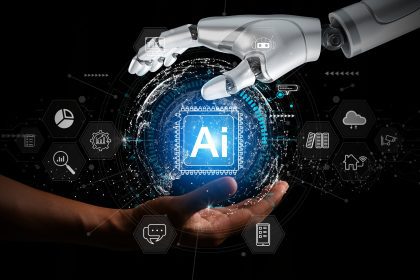The seven-year medical odyssey that once defined rare disease diagnosis is being rewritten by algorithms capable of identifying medical zebras in the time it takes to refresh your social media feed. Artificial intelligence tools are slashing diagnostic timelines from years to seconds, potentially saving lives and eliminating the painful “diagnostic odyssey” that rare disease patients have endured for generations.
These AI diagnostic systems are rapidly transforming from theoretical possibilities to practical clinical tools, analyzing everything from facial features to genetic sequences with a speed and accuracy that can surpass even experienced specialists. For the estimated 400 million people worldwide living with rare diseases, these technologies offer something precious that many have never experienced—the simple dignity of a timely, accurate diagnosis.
Let’s explore how these remarkable AI tools are revolutionizing rare disease detection and why they might represent the most significant advancement in diagnostic medicine since the invention of the microscope.
The pattern recognition breakthrough
Rare diseases present a perfect paradox for human diagnosticians. Their unfamiliarity makes them difficult to recognize, yet many leave subtle patterns of symptoms, lab results, and physical manifestations that follow consistent, identifiable rules. This combination creates the perfect problem for artificial intelligence to solve.
AI systems excel at detecting patterns too subtle or complex for human recognition, particularly when trained on massive datasets encompassing thousands of rare conditions. While even the most experienced specialist might encounter only a handful of cases of a particular rare disease in their entire career, AI tools can analyze millions of patient records, scientific literature, and clinical images to identify the telltale signatures of even the most obscure conditions.
This pattern recognition capability works across multiple data types. Facial analysis algorithms can identify distinctive facial features associated with hundreds of genetic syndromes from a single photograph. Natural language processing systems can scan years of clinical notes to spot symptom combinations that point to specific rare diseases. Image analysis tools can detect subtle anomalies in radiology scans that might escape human notice.
What makes this approach particularly powerful is how these systems improve over time. Each new case expands the AI’s knowledge base, making future diagnoses more accurate and comprehensive. This continuous learning creates a virtuous cycle where diagnosis becomes increasingly precise as the technology is more widely adopted and exposed to more diverse patient data.
The genetic analysis acceleration
Perhaps nowhere has AI made a more dramatic impact than in the interpretation of genetic data. While genetic sequencing costs have plummeted, the expertise needed to analyze these results remains scarce. A single patient’s genome contains roughly 3 billion base pairs, making manual analysis practically impossible for complex cases.
AI systems can now scan genetic sequences and identify disease-causing mutations in minutes rather than the weeks or months traditional analysis might require. These tools compare patient genetic data against databases of known disease-causing variants while also evaluating previously unclassified genetic changes for their potential to disrupt normal biological function.
The most advanced AI genetic analysis tools go beyond simple pattern matching to predict how specific genetic variants might affect protein structure and function. By simulating these molecular interactions, AI can help determine whether an unfamiliar genetic change is likely to cause disease, expanding diagnostic capabilities beyond the limitations of existing medical literature.
This capability is particularly valuable for ultra-rare conditions where limited case data exists. Many patients with extremely unusual genetic disorders have spent years without diagnosis because their specific genetic variant hasn’t been previously documented. AI-powered predictive analysis can provide crucial insights even for these one-in-a-million cases, suggesting likely diagnoses where no human reference point exists.
The symptom timeline detection
Many rare diseases evolve in distinctive patterns over time, with symptoms appearing in specific sequences or combinations that serve as diagnostic signatures. Traditional medical approaches often struggle to connect these temporal dots, especially when symptoms develop over years and span multiple medical specialties.
AI diagnostic systems excel at analyzing these longitudinal patterns, connecting seemingly unrelated symptoms separated by years into coherent disease timelines. By mining electronic health records for temporal relationships between symptoms, laboratory values, and treatments, these systems can identify disease trajectories that would be nearly impossible to detect through conventional medical approaches.
What makes this capability particularly valuable is how it works with incomplete or fragmented medical records. Even when patients have received care across multiple unconnected health systems, AI tools can piece together partial clinical narratives to suggest possible rare disease diagnoses that explain the full symptom constellation.
This temporal pattern recognition helps identify rare diseases at earlier stages, when treatment often proves most effective. By flagging subtle early manifestations that might otherwise be dismissed as unrelated to a patient’s primary symptoms, AI systems can compress the diagnostic timeline from years to months or even weeks, potentially altering disease progression before irreversible damage occurs.
The literature-clinical connection
Medical knowledge about rare diseases exists in fragmentary form across millions of research papers, case reports, and clinical guidelines that no human physician could possibly master. AI systems bridge this knowledge gap by continuously scanning and synthesizing the entire body of rare disease literature and comparing it against individual patient presentations.
These AI literature review systems can identify relevant research about conditions that local physicians might never have encountered, essentially democratizing specialist-level knowledge. A doctor in a rural clinic can now tap into the same rare disease information that might previously have been known only to a handful of researchers at specialized academic centers.
What makes this approach particularly powerful is how it handles the constantly evolving nature of medical knowledge. While human experts might take years to become aware of newly discovered conditions or treatment approaches buried in specialized journals, AI systems can incorporate this information immediately, ensuring patients benefit from the very latest scientific insights.
This literature-clinical connection helps solve one of rare disease diagnosis’s greatest challenges—the “known unknown” problem where the correct diagnosis exists in medical literature but never gets connected to the patient’s case. By systematically comparing patient data against the entire corpus of medical knowledge, AI dramatically reduces the chance that a recognizable rare disease will go undiagnosed simply because local providers aren’t familiar with it.
The multisystem integration advantage
Rare diseases often affect multiple body systems simultaneously, creating symptom constellations that cross traditional medical specialties. This multisystem nature frequently contributes to diagnostic delays, as specialists focus on symptoms within their domain without recognizing the broader pattern.
AI diagnostic systems excel at this cross-specialty integration, simultaneously analyzing cardiological, neurological, dermatological, immunological, and other findings to identify conditions that might be missed when each system is evaluated in isolation. This holistic perspective helps detect diseases that manifest across multiple specialties but might appear non-specific when viewed through any single clinical lens.
The integration advantage extends to multiple data types as well. By simultaneously analyzing structured data like lab values, unstructured information from clinical notes, imaging studies, and even patient-reported symptoms from questionnaires, AI systems create comprehensive clinical pictures that more closely match how rare diseases actually manifest in real patients.
This multidimensional approach proves particularly valuable for conditions with variable presentations. While individual patients with the same rare disease might have different predominant symptoms, AI systems can recognize the underlying pattern across this variability, helping identify conditions even when they don’t present in textbook fashion.
The real-world implementation challenges
Despite their transformative potential, AI rare disease diagnostic tools face significant implementation hurdles that have slowed their adoption in everyday clinical settings. Understanding these challenges helps set realistic expectations for how quickly these technologies will reach patients beyond academic medical centers.
Data privacy concerns represent a primary obstacle, as effective rare disease AI requires access to sensitive patient information. Ensuring these systems operate within regulatory frameworks while still accessing sufficient training data remains an ongoing challenge. This tension is particularly acute for pediatric rare diseases, where additional protections for minors’ data must be navigated.
Integration with existing clinical workflows presents another hurdle. Even the most accurate AI system provides limited value if physicians find it cumbersome to use or if it generates results that can’t be easily incorporated into clinical decision-making. Successful implementation requires thoughtful interface design and seamless embedding within electronic medical record systems that doctors already use.
Perhaps most challenging is the “black box” problem, where AI systems reach diagnostic conclusions through processes too complex for human comprehension. For physicians legally and ethically responsible for diagnostic decisions, this lack of explainability creates understandable hesitation. The most promising implementations address this by providing not just diagnostic suggestions but also transparent reasoning and confidence levels that help clinicians understand why the AI reached specific conclusions.
The patient perspective transformation
While technical capabilities rightly dominate discussions of AI diagnostics, their most profound impact may be on the lived experience of rare disease patients and their families. After generations of being told their symptoms were psychosomatic, exaggerated, or simply medically inexplicable, patients are finding validation and answers through these new diagnostic approaches.
The psychological toll of diagnostic uncertainty can be devastating. Patients often report that receiving an accurate diagnosis, even for a serious condition, brings immense relief after years of being dismissed or misdiagnosed. AI tools are dramatically shortening this period of uncertainty, allowing patients to more quickly access appropriate treatments, connect with relevant support communities, and make informed life decisions.
This diagnostic clarity particularly benefits patients from marginalized communities whose symptoms have historically been more likely to be dismissed by medical professionals. AI systems, when properly designed and trained on diverse datasets, can provide more objective evaluations that depend less on provider biases or communication styles, potentially helping address long-standing healthcare disparities.
Beyond individual diagnosis, these technologies are expanding our understanding of rare diseases themselves. By identifying previously unrecognized patients and detecting subtle phenotypic patterns, AI tools are refining condition definitions and revealing new disease subtypes. This expanded knowledge benefits both current and future patients by enabling more personalized treatment approaches based on specific disease mechanisms.
The rise of AI rare disease diagnostics represents one of those rare technological advances that delivers benefits across the entire healthcare ecosystem. Patients receive faster, more accurate diagnoses. Physicians gain powerful new tools to solve their most challenging cases. Researchers discover new disease insights and potential treatment targets. And healthcare systems potentially reduce costs by eliminating years of unnecessary tests and inappropriate treatments. In a medical field often defined by agonizing waits and disappointing dead ends, these AI tools offer something truly revolutionary—the gift of answers measured in seconds rather than years.

















